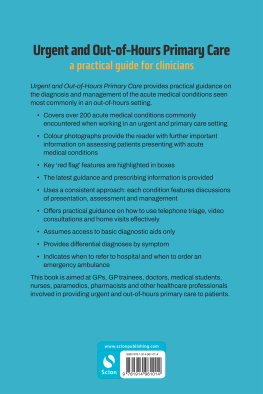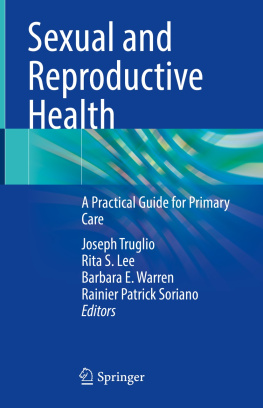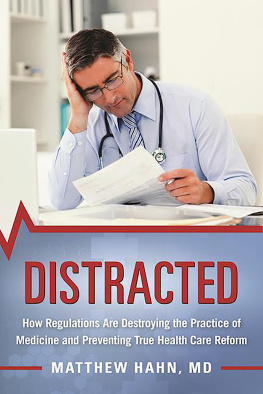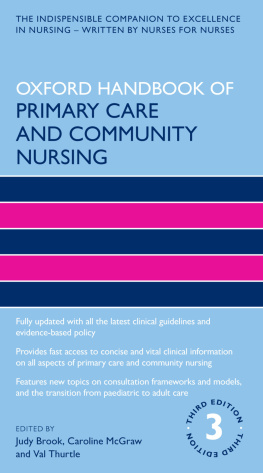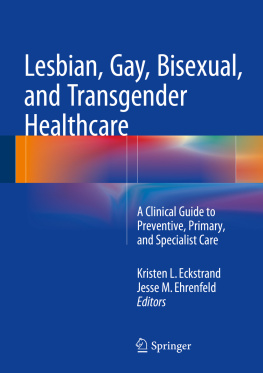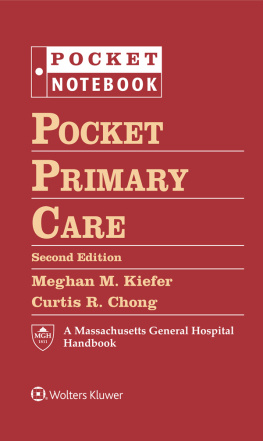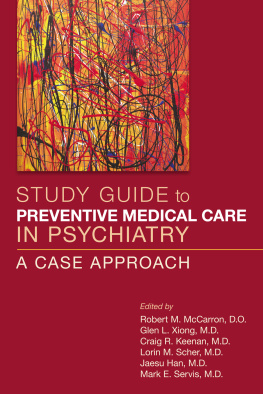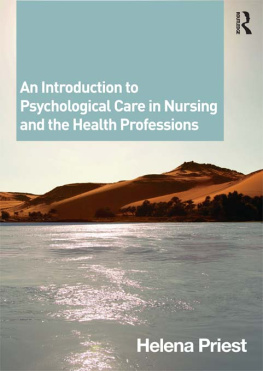
Look It Up!
Look It Up! | What Patients, Doctors, Nurses, and Pharmacists Need to Know about the Internet and Primary Health Care |
PIERRE PLUYE, MD, AND ROLAND GRAD, MD, WITH JULIE BARLOW
McGill-Queens University Press
Montreal and Kingston London Chicago
McGill-Queens University Press 2017
ISBN 978-0-7735-5136-7 (cloth)
ISBN 978-0-7735-5190-9 (ePDF)
ISBN 978-0-7735-5191-6 (ePUB)
Legal deposit second quarter 2017
Bibliothque nationale du Qubec
Printed in Canada on acid-free paper
McGill-Queens University Press acknowledges the support of the Canada Council for the Arts for our publishing program. We also acknowledge the financial support of the Government of Canada through the Canada Book Fund for our publishing activities.
LIBRARY AND ARCHIVES CANADA CATALOGUING IN PUBLICATION
Pluye, Pierre, author
Look it up! : what patients, doctors, nurses, and pharmacists need to know about the Internet and primary health care / Pierre Pluye and Roland Grad with Julie Barlow. Includes bibliographical references and index. Issued in print and electronic formats.
ISBN 978-0-7735-5136-7 (hardcover). ISBN 978-0-7735-5190-9 (ePDF). ISBN 978-0-7735-5191-6 (ePUB)
1. Medicine Computer network resources. 2. Health Computer network resources. 3. Internet in medicine. 4. Medical care Computer network resources. 5. Medical informatics. I. Barlow, Julie, 1968, author II. Grad, Roland, 1960, author III. Title.
R859.7.I58P58 2017 | 610.285 | C2017-903327-1
C2017-903328-X |
This book was typeset by Sandra Friesen in 10.5/13 .5 Minion.
Contents
by David Slawson, MD
Foreword
Medical historians estimate that the first time an average person had a better than 50:50 chance of being helped, rather than harmed, by consulting a medical clinician was somewhere in the early 1900s. The discovery that germs and cancerous growths caused disease, not bad bile, bad humors, and bad vapors, led to the introduction of antibiotics and chemotherapy agents, handwashing, sterile instruments during surgery, and proper sewage management. For the last 100 years the public has confidently believed that medicine is an asset to public health. We have had faith in the power of health education, disease prevention efforts, diagnosis, prognosis, and treatment to improve lives.
Today, however, many medical and public health scholars, managers, and policy-makers fear that the pendulum has swung the other way. They are concerned that an average person may now be more likely to receive harm, rather than benefit, from consulting a clinician.
How can this be?
Simply put, medicine has evolved into a system that is overwhelmed by new technology, diagnostic tests, medicinal drugs, and procedures. As a result, the two greatest risks that patients now face when they consult their doctor are overdiagnosis and overtreatment. Overdiagnosis occurs when someone is given a diagnostic label that may lead to harm, from either increased anxiety or unnecessary treatment for a condition that either has no effective treatment or requires no treatment. The harm of overtreatment is more obvious, coming from both known and unexpected adverse outcomes of drugs and procedures. For example, many patients continue to be diagnosed with diabetes on the basis of blood sugar levels for which no treatment, other than diet and exercise, is effective. Many of them receive expensive treatments anyways, then experience adverse effects and increased anxiety, which in turn lead to increased sick time from work and a reduced quality of life.
What can be done to stem the rising tide of overdiagnosis and overtreatment and to address the specter of contemporary medicine becoming a public health hazard? This book takes a huge and necessary step toward stopping and even reversing this trend. Pierre Pluye and Roland Grad have written Look It Up! with Julie Barlow for both patients and medical personnel. Drawing on years of their own research, the authors tell real-life stories about clinicians who use electronic knowledge resources to treat patients in a way that is acceptable to both patients and clinicians. One result of clinicians use of these resources is that it reduces overdiagnosis and overtreatment in medicine. These stories, based on interviews with doctors, nurses, and pharmacists, show that it is possible to make a difference, but that this requires a different type of doctor, nurse, and pharmacist and also a different type of patient.
The clinicians Pluye and Grad describe accept that they cant possibly remember everything. Thats why its so important to be able to accurately look it up. No one would ever trust a travel agent to rely only their memory to provide detailed information about airlines, flight numbers, flight times, transfer gates, and layover times for a trip from, say, Moose Jaw, Saskatchewan, to Reykjavik, Iceland. We would expect and even demand that the agent consult the most up-to-date information available on the Internet. In fact, most of us would probably check the information ourselves. Along the same lines, it can no longer be expected that clinicians will rely on their memory alone to handle complex medical problems, and indeed this practice should be unacceptable today. If my 11-year-old daughter were bitten on the finger by a cat and developed a fever and had red streaks spreading up her arm but was allergic to penicillin, I would expect her doctor to check a reliable medical source to determine what antibiotics would be effective in this unusual circumstance before treating her, and not to simply rely on a memory from the distant past.
In this book, Pierre Pluye and Roland Grad explain in clear and understandable language what shared decision-making and evidence-based medicine mean. Its true that medicine has always been based on evidence, but Pluye and Grad elegantly illustrate how decisions can and should be made on the basis of probability theory and real-world outcomes. Traditional medical education has focused too narrowly on disease pathophysiology. As a result, much medical care treats the individual patient like a complex engineering problem. Through a chain of inductive reasoning that links symptoms and clinical findings to underlying dysfunctions of organs, tissues, and, eventually, cells, clinicians assemble patients into logical puzzles for which they devise diagnostic tests and prescribe treatments aimed at removing the abnormality. In contrast, shared decision-making, as Pluye and Grad show, puts the emphasis on research that directly supports the goal of helping patients to live longer, healthier, and more productive lives.
The stories in this book show how using electronic information helps clinicians determine when a test is likely to be helpful rather than harmful, how it helps them find resolution when disagreements arise, why it is increasingly important to have pharmacists on the health care team, how clinicians and patients can choose the best treatment available, and what specific role patients play in making decisions about their health care. The stories also show the perils and pitfalls of taking unguided trips to the Internet when seeking medical information, the problems that arise in communication between medical providers and their patients, and finally, how to identify that special clinician we all want for ourselves and our loved ones.
The authors have spent much of their careers educating future doctors, nurses, and pharmacists about using electronic information in their practice, helping them to feel good about not knowing everything by focusing on patient-oriented evidence that matters (POEMs) and other information that is valuable to both clinicians and patients. For clinicians, electronic knowledge resources are important because, among other things, trustworthy information will help them to avoid overdiagnosing and overtreating and thereby harming their patients. For patients, electronic knowledge resources can help them live the longest, healthiest, most productive lives they can.
Next page

